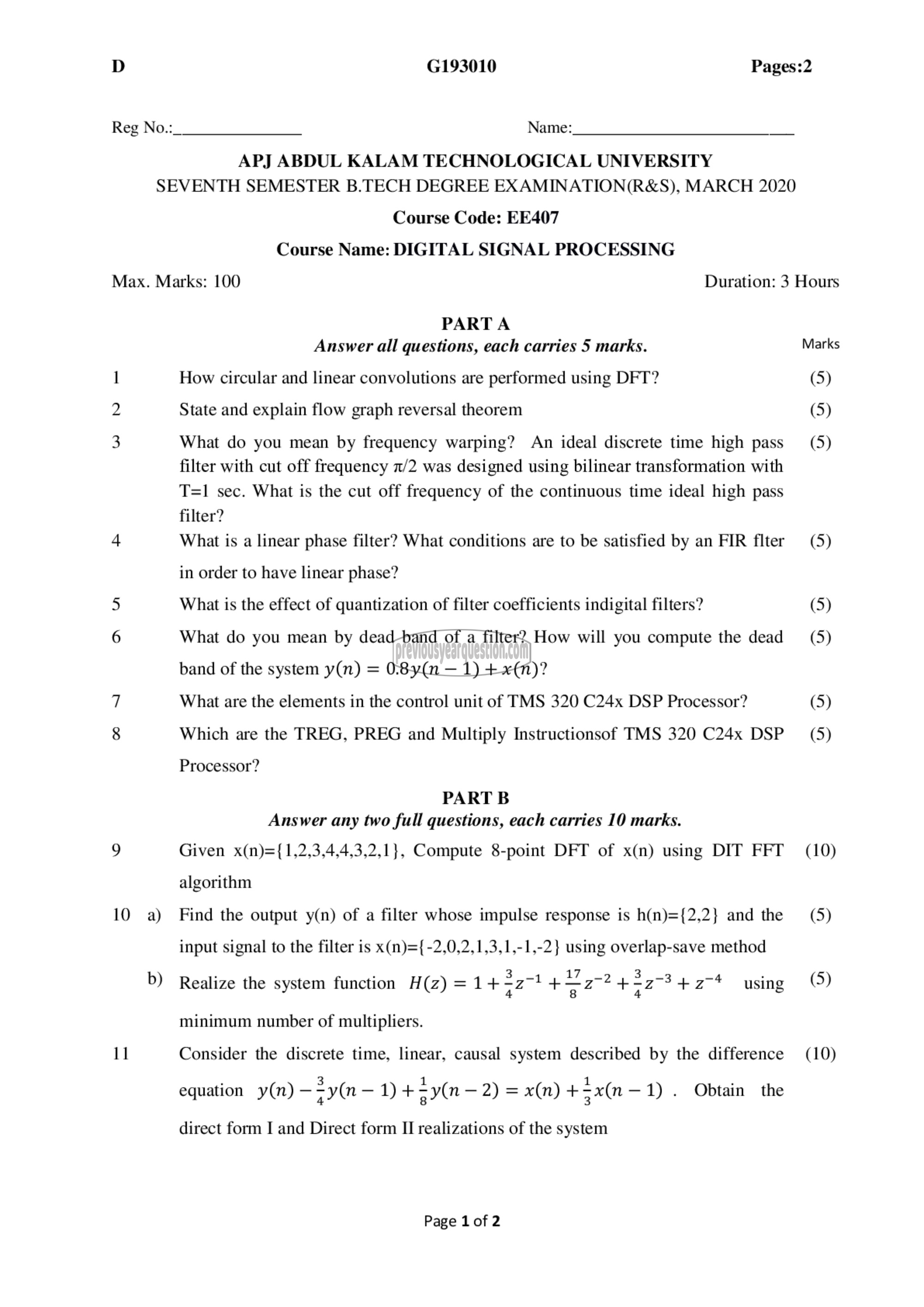APJ ABDUL KALAM TECHNOLOGICAL UNIVERSITY Previous Years Question Paper & Answer
Semester : SEMESTER 7
Subject : Digital Signal Processing
Year : 2020
Term : MARCH
Scheme : 2015 Full Time
Course Code : EE 407
Page:1
D G193010 Pages:2
Reg No.:_ Name:
APJ ABDUL KALAM TECHNOLOGICAL UNIVERSITY
SEVENTH SEMESTER B.TECH DEGREE EXAMINATION(R&S), MARCH 2020
Course Code: EE407
Course Name: DIGITAL SIGNAL PROCESSING
Max. Marks: 100 Duration: 3 Hours
PARTA
Answer all questions, each carries 5 marks. Marks
1 How circular and linear convolutions are performed using DFT? (5)
2 State and explain flow graph reversal theorem (5)
3 What do you mean by frequency warping? An ideal discrete time high pass (5)
filter with cut off frequency 7/2 was designed using bilinear transformation with
T=1 sec. What is the cut off frequency of the continuous time ideal high pass
filter?
4 What is a linear phase filter? What conditions are to be satisfied by an FIR flter (5)
in order to have linear phase?
5 What is the effect of quantization of filter coefficients indigital filters? (5)
6 What do you mean by dead band of a filter? How will you compute the dead (5)
band of the system y(n) = 0.8y(n — 1) + x(n)?
7 What are the elements in the control unit of TMS 320 C24x DSP Processor? (5)
8 Which are the TREG, PREG and Multiply Instructionsof TMS 320 (245 DSP (5)
Processor?
PART تا
Answer any two full questions, each carries 10 marks.
9 Given x(n)={1,2,3,4,4,3,2,1}, Compute 8-point DFT of x(n) using DIT FFT (10)
algorithm
10 a) Find the output y(n) of a filter whose impulse response is h(n)={2,2} and the (5)
input signal to the filter is x(n)={ -2,0,2,1,3,1,-1,-2} using overlap-save method
b) Realize the system function H(z) =1+ 421 + 22 $223 + 24 08108 (5)
minimum number of multipliers.
11 Consider the discrete time, linear, causal system described by the difference (10)
equation y(n) - =y(n -1)+ =y(n —2)=x(n)+ उ - 1) . Obtain the
direct form I and Direct form II realizations of the system
Page 1 of 2
